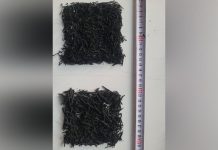Africa-Press – South-Africa. By 2028, South Africa wants to have medicines, such as methadone, which will help people get off opioids, like heroin, available at all state clinics.
This is part of the country’s new plan for services that can help to cut HIV infections over the next five years, which was released in March.
In 2021, South Africa recorded about 210 000 new HIV infections.
Opioids are a group of drugs that can give you a feeling of extreme pleasure because they prompt your brain to release feel-good chemicals — but they are addictive. Other than the illegal substance, heroin, the painkillers, morphine and codeine, are also part of this group.
People who are hooked on opioids, such as heroin, often get their fix by injecting it.
Although it’s difficult to get exact numbers (because using drugs like these recreationally is illegal in South Africa), a study among 926 users published in 2019 showed that one in five people who inject drugs have HIV.
Why? When drug users share or use discarded needles, there’s a big risk that they can either get infected with HIV or spread the virus.
Enter methadone, which is a substitute for heroin. It is a medicine that’s taken daily as a liquid or a pill to help curb the withdrawal symptoms from the illegal drug.
To your brain, methadone looks like heroin, yet it doesn’t cause as much of a high. So, if you don’t get another dose soon after the high wears off, your body doesn’t experience such bad withdrawal symptoms (for example, vomiting, breathing very fast, stomach cramps and feeling anxious), which is why methadone is used to help people break their heroin dependence. This is called opioid substitution therapy (OST).
Because people swallow their fix rather than inject it, there’s a smaller chance of opioid users sharing needles or using an old one.
Moreover, OST programmes don’t just hand out methadone; they also offer other harm reduction services, such as giving clean needles and syringes to drug users who may still be injecting, so that they won’t have to share.
Studies show that OST can halve the risk of contracting both HIV and the hepatitis C virus (which leads to an infection spread through blood and which damages the liver) and help HIV-positive users to stay on antiretroviral (ARV) treatment because people can often get their HIV medicine at the same place as where they get methadone.
Andrew Scheibe, a public health specialist at the health organisation, TB HIV Care, told Bhekisisa that they estimate there are around 400 000 heroin users in South Africa.
The substitute drug is currently available only at district hospitals – for people who are experiencing withdrawal symptoms (because they’ve stopped using altogether) – and then only for only up to 10 days.
This means that getting methadone to help wean people off heroin gradually is not a realistic option if they rely on public healthcare.
With the new plan, though, the aim is to give all opioid drug users who want methadone, the medicine for free at state clinics.
But for a countrywide roll-out to work, the government has to do five things over the next five years, says Scheibe, who also helped to write guidelines for the United Nations Office on Drugs and Crime on putting OST programmes in place.
“A programme like this wouldn’t start everywhere at once; it would have to be a stepwise process.”
For More News And Analysis About South-Africa Follow Africa-Press






